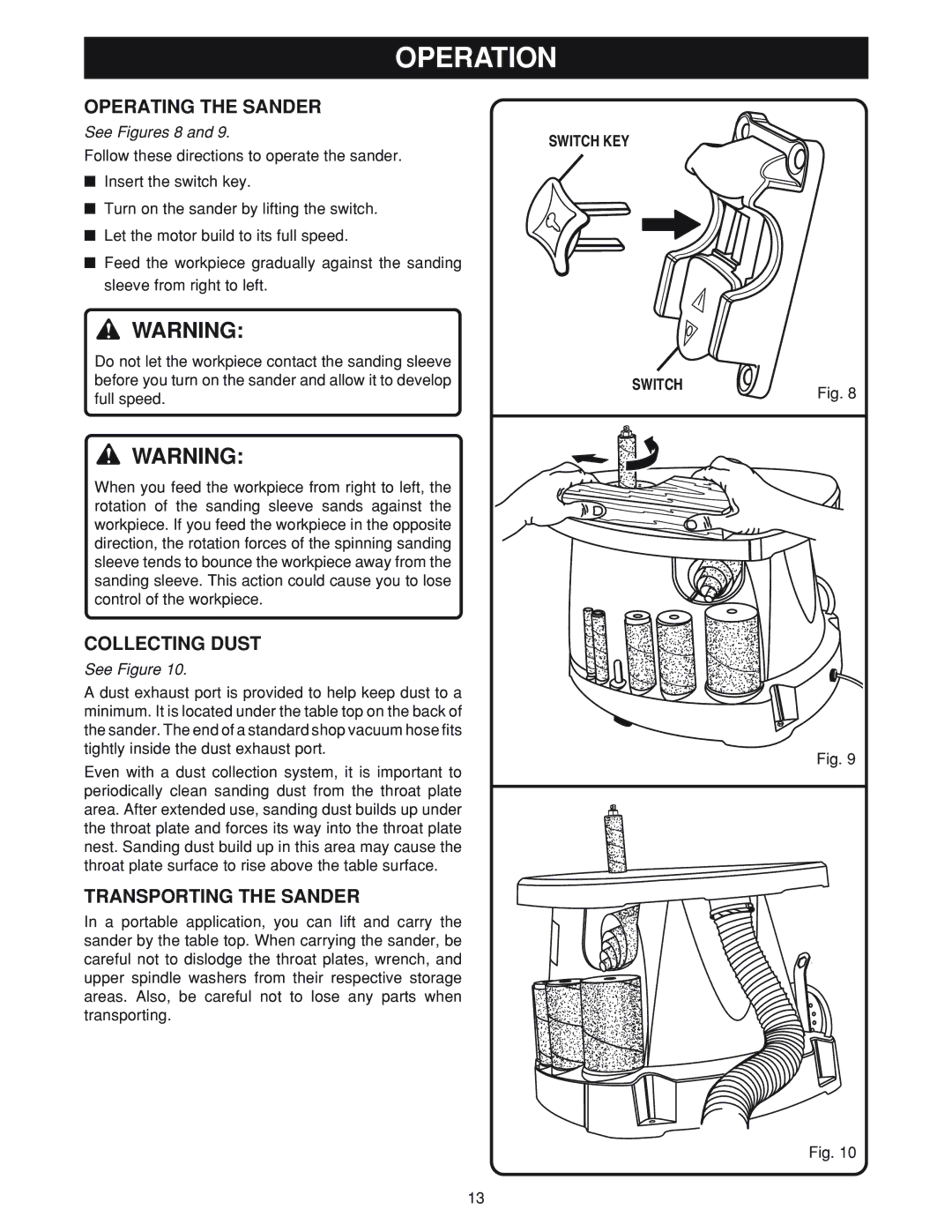
OPERATION
OPERATING THE SANDER
See Figures 8 and 9.
Follow these directions to operate the sander.
■Insert the switch key.
■Turn on the sander by lifting the switch.
■Let the motor build to its full speed.
■Feed the workpiece gradually against the sanding sleeve from right to left.
![]() WARNING:
WARNING:
Do not let the workpiece contact the sanding sleeve before you turn on the sander and allow it to develop full speed.
SWITCH KEY
SWITCH
Fig. 8
![]() WARNING:
WARNING:
When you feed the workpiece from right to left, the rotation of the sanding sleeve sands against the workpiece. If you feed the workpiece in the opposite direction, the rotation forces of the spinning sanding sleeve tends to bounce the workpiece away from the sanding sleeve. This action could cause you to lose control of the workpiece.
COLLECTING DUST
See Figure 10.
A dust exhaust port is provided to help keep dust to a minimum. It is located under the table top on the back of
the sander. The end of a standard shop vacuum hose fits
tightly inside the dust exhaust port.
Fig. 9
Even with a dust collection system, it is important to periodically clean sanding dust from the throat plate area. After extended use, sanding dust builds up under the throat plate and forces its way into the throat plate nest. Sanding dust build up in this area may cause the throat plate surface to rise above the table surface.
TRANSPORTING THE SANDER
In a portable application, you can lift and carry the sander by the table top. When carrying the sander, be careful not to dislodge the throat plates, wrench, and upper spindle washers from their respective storage areas. Also, be careful not to lose any parts when transporting.
Fig. 10
13
